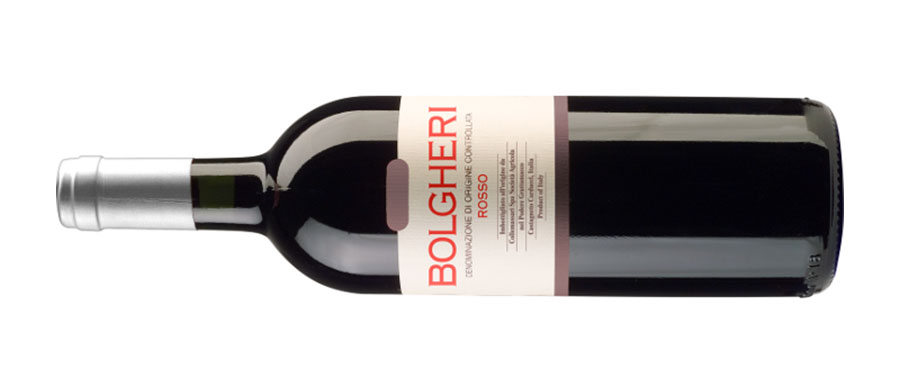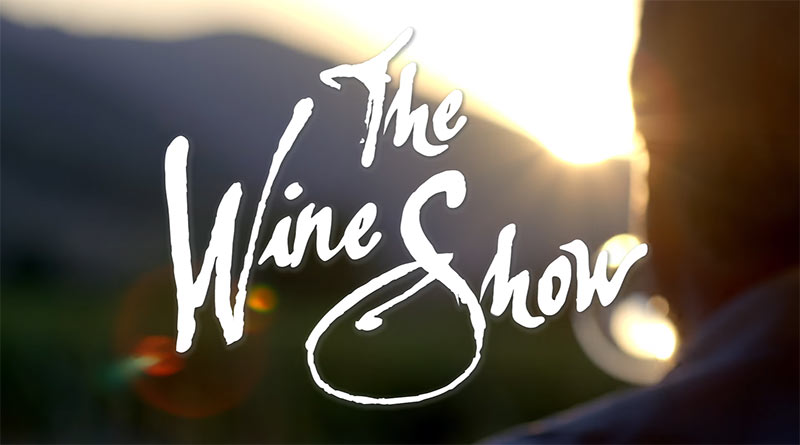Back in October I spent a long weekend in the Chianti region of Tuscany and visited three quite different wineries that are all part of the Arezzo Wine Route. Read Part 1 of my recap and then journey on to what follows.
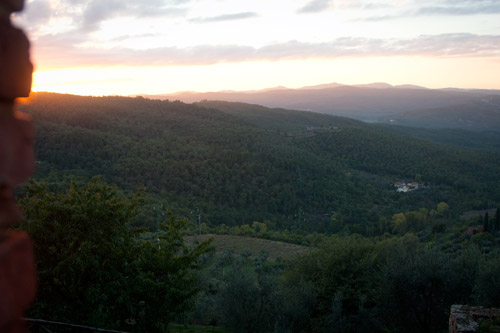
Pancole
Pancole winery was completely different from Fattoria Miglarina & Montozzi as it was much smaller with only has 10 hectares and just two of vineyards that are all new plantings. It was just started in 2009 and with a very modern label design that’s quite the opposite of most Chianti wineries that seem to favor a more classic look. Pancole is a sort of back-to-the-land project of Agnese and Alessandro, a hip couple who got tired of the city life of Bologna and one day felt the urge to start a farm in the Tuscan countryside.
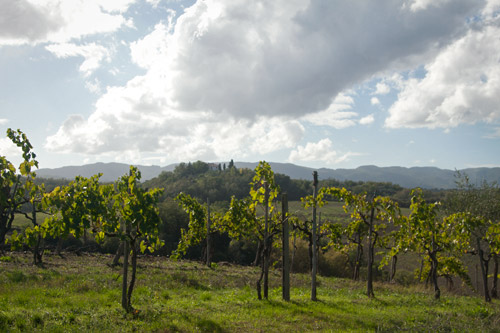
So they now grow organic veggies that they sell at the local markets, raise chickens, make olive oil and produce about 15,000 bottles of wine a year with vineyards that they bought and some that they planted. They also have plans to open an agriturismo B&B (as seems to be always the case with Tuscan wineries), make their own cheese, meat and host culinary events.
Pancole is a lovely property that feels more like someone’s home than a boutique Tuscan winery, which is probably due to the fact that Alessandro and Agnese live on the little house next to the compact cellar with their many cats and dangerously cute Dachshund.
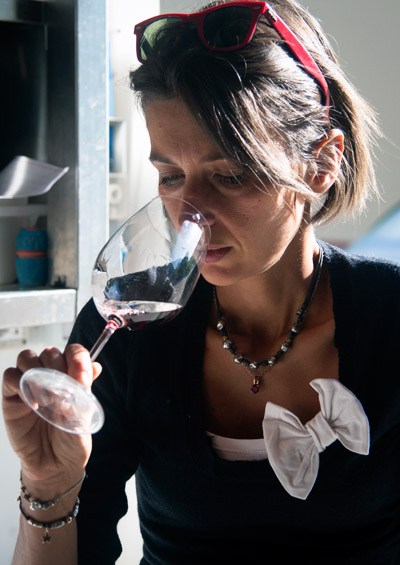 When I first met Agnese, who was wearing a black shirt with a gigantic white bowtie and red vintage sunglasses, I found it hard to picture her doing any farmwork. But as I watched her in the cellar while we tasted from the tanks and later around the vineyards, I could see how much she enjoys this new life after quitting her accounting job in the city. She said at first it was hard to adapt to being mostly outdoors doing much more physical work than she was used to in the office, but she claimed she wouldn’t change it for anything.
When I first met Agnese, who was wearing a black shirt with a gigantic white bowtie and red vintage sunglasses, I found it hard to picture her doing any farmwork. But as I watched her in the cellar while we tasted from the tanks and later around the vineyards, I could see how much she enjoys this new life after quitting her accounting job in the city. She said at first it was hard to adapt to being mostly outdoors doing much more physical work than she was used to in the office, but she claimed she wouldn’t change it for anything.
Pancole currently makes four reds, all Sangiovese-based with a tiny bit of other local varieties. The Fauno is only aged only in stainless steel tanks and is my favorite of the four. The other wines are called, Orfeo, a 100% Sangiovese that sees some eight months of oak aging, Crono, and Aiace. The Fauno and Crono have DOCG Chianti certification, while the other two have Rosso Toscana IGT.
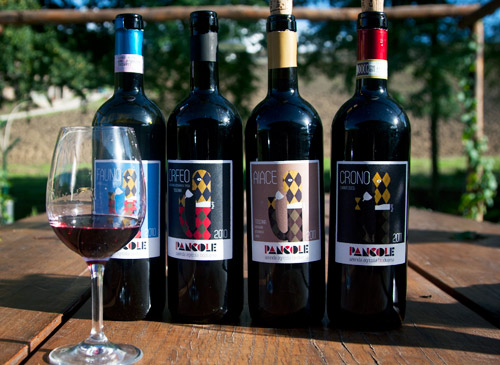
I tasted the 2010 and 2011 of the wines, as well as 2013 from the tanks, and found them to be overall a bit rustic and irregular. But while it is obvious that Pancole needs a few more vintages to find it’s personality and to round off some edges, they’re a winery to keep an eye on as they’re going in the right direction with the right philosophy. Besides, all their wines are only between 7-9€ which might be high for the locals who are spoiled with how affordable their Chianti wines are but not bad for the rest of us from other countries.
Paterna
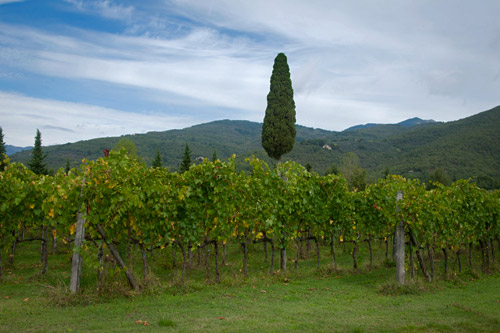
I first tasted the wines from Paterna at the tribute dinner to Manuel Vázquez Montalbán, which they were hosting as he was a personal friend of one of the founders of this small cooperative. Unsurprisingly, their Chianti Colli Aretini was Eric Asimov’s #1 pick in a recent tasting of non-Classico Chiantis (he said the 2009 vintage “had all the purity and balance I love in a good sangiovese wine”) and I couldn’t agree more, especially given its lightness without being vapid and still having great, easygoing character. At the dinner in question, though, my favorite of their wines was actually the 2006 Vignanova (that was served with slow-stewed pork trotters). This is a mostly Sangiovese wine with a little Colorino del Valdarno, aged for a year in mostly used oak barrels.
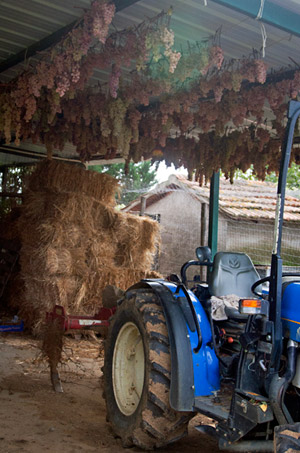 Paterna is a small estate of about 15 hectares, eight of which are vineyards, five of olive groves and one of vegetables that they serve to the agriturismo guests. They grow everything organically and their wines have only very small amounts of sulphites added to them. They also have chickens, cure their own meats and have a little shop where it’s possible to buy their products. Besides the aforementioned Colli Aretini and Vignanova wines, they also produce a basic red and a basic white, a lovely Vin Santo (in the picture you can see the drying grapes that will be used for it) and a monovarietal wine made with local grape Pugnitello called, Pugnirosso. As you can see here, besides being very pleasant and terroir-driven, all their wines are extremely affordable (except the Pugnirosso due to the low production of the Pugnitello grape).
Paterna is a small estate of about 15 hectares, eight of which are vineyards, five of olive groves and one of vegetables that they serve to the agriturismo guests. They grow everything organically and their wines have only very small amounts of sulphites added to them. They also have chickens, cure their own meats and have a little shop where it’s possible to buy their products. Besides the aforementioned Colli Aretini and Vignanova wines, they also produce a basic red and a basic white, a lovely Vin Santo (in the picture you can see the drying grapes that will be used for it) and a monovarietal wine made with local grape Pugnitello called, Pugnirosso. As you can see here, besides being very pleasant and terroir-driven, all their wines are extremely affordable (except the Pugnirosso due to the low production of the Pugnitello grape).
So what the hell is Pugnitello? It is one of many local grapes that used to be popular in Chianti before Phylloxera and that has been recuperated thanks to a program of the Istituto Sperimentale per la Viticoltura in Arezzo, under the umbrella name of Chianti Classico 2000. There are now only a handful of producers who make small amounts of Pugnitello wines, but after tasting not one but two of them (the other one being from Mannucci Droandi) I sure hope there will be more in the future.
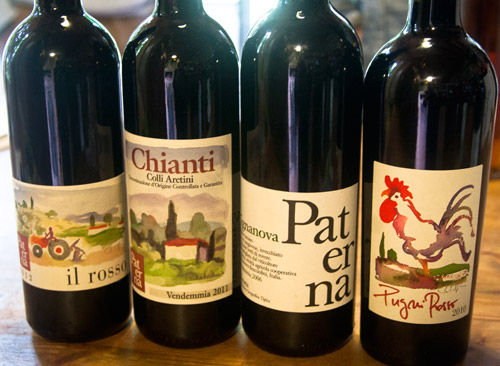
It was a short trip but a great introduction to the importance of appreciating the good, simple things in life. On my last day, just before catching the train to the airport, I had lunch at a small cafe in Montevarchi full of regulars who work on nearby offices. The house wine I had with my perfectly cooked pasta was not only tasty but also only 1€ for a glass as well as from a producer just 3km down the road, which are both things bars and restaurants in Catalonia could learn from.
Please note that all wineries offer not only accommodation but also visits and tastings, contact them directly for pricing and scheduling. Thanks to Slow Food Valdarno for scheduling the visits for me.
